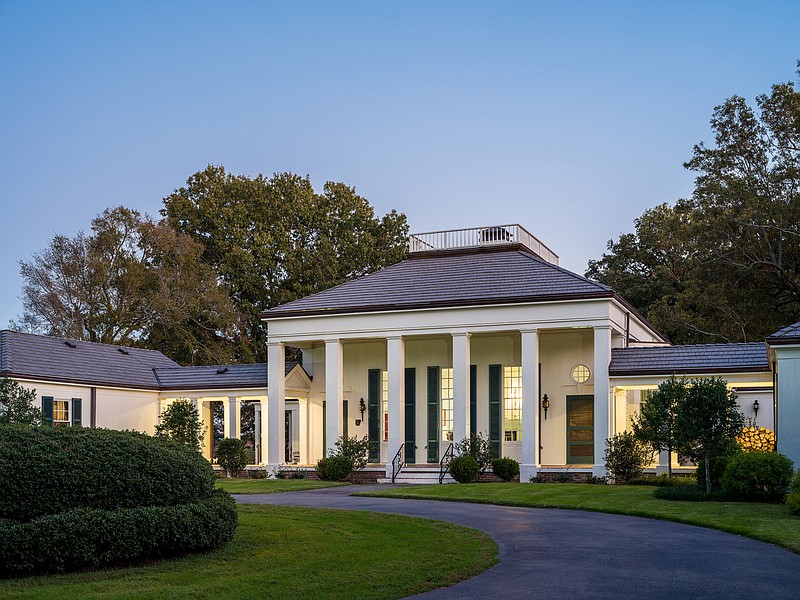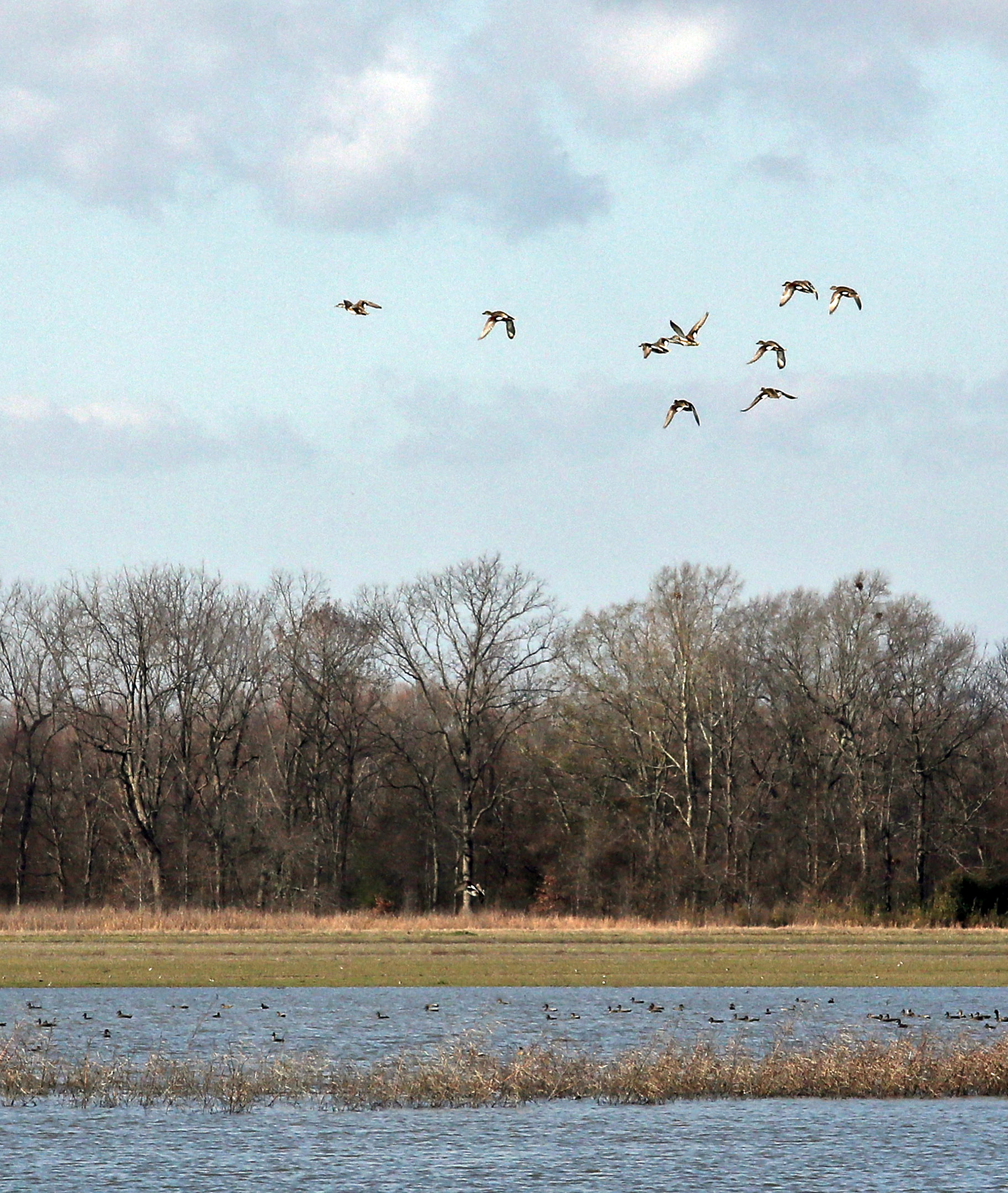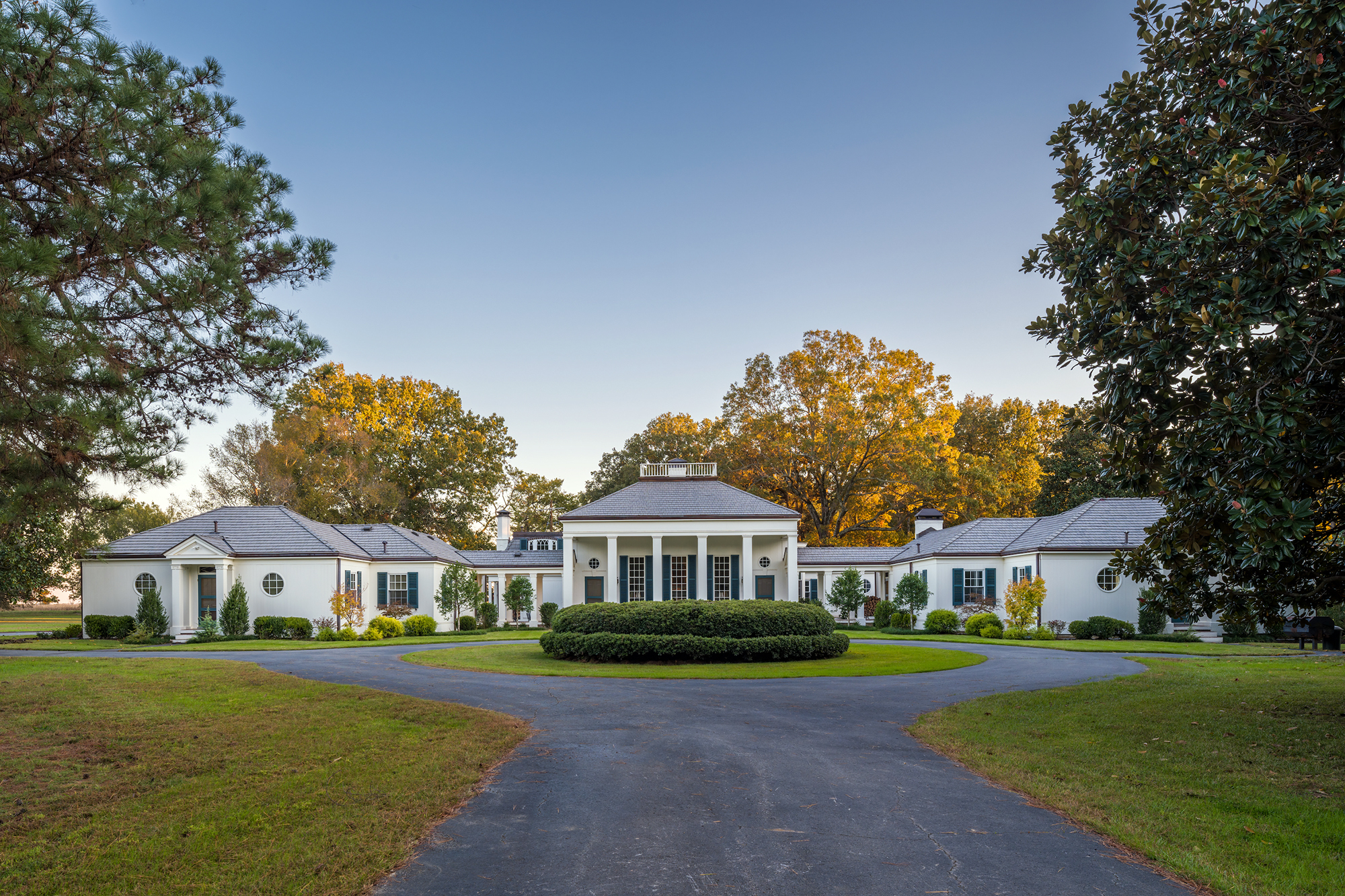It's a warm January morning as I step out of the main house at Wingmead. It's 5:30 a.m., and Tim Doepel, who has managed wildlife on this 15,000-acre tract for the past 44 years, has the coffee hot. I'm here at the invitation of Wil and Ashley Jackson.
Ashley is the daughter of Jane Lyon. Wingmead, a holy name among duck hunters worldwide, has been owned by Arkansas' Lyon family since 1976. It's an almost mythical place for those of us who love the rich history of waterfowl hunting.
Wingmead was established in 1937 by Edgar Monsanto Queeny, son of John Francis Queeny, who founded Monsanto Chemical Co. Wingmead is a word of Scottish origin that means "meadow of wings."
Though I've written extensively about Wingmead through the years, this is my first time here. I spent the night in the main house, which is like sleeping in a world- famous museum.
Plans for the home at Wingmead were drawn in 1937 by St. Louis architect Frederick Wallace Dunn. A Yale University graduate, Dunn was a well-known figure in St. Louis who had his own firm and taught architectural design at Washington University. Construction of the house was completed in 1939.
Queeny and his wife would come to Wingmead in October each year and stay until March. Guests--including Walt Disney and outdoors writer Nash Buckingham--would arrive on Friday in time for a formal dinner, hunt ducks on Saturday and Sunday mornings, hunt quail on Saturday afternoons and depart on Sunday afternoons.
Queeny died July 7, 1968. His wife maintained the property until her death in 1975, when it was donated to Barnes Hospital in St. Louis. Barnes announced that the estate would be sold by sealed bids in January 1976. Rumors about possible buyers abounded. Names mentioned included Johnny Cash and Elvis Presley, but it was the Lyon family of Little Rock that wound up purchasing the farm.
Frank Lyon Sr., born at Camden in 1910, began the Frank Lyon Co. in 1942 as an electrical appliance distributing company. In 1952, Lyon was awarded the Arkansas RCA franchise, later obtaining Whirlpool and RCA distributorships for large parts of Arkansas, Texas, Louisiana, Kansas and Missouri. In the early 1970s, he negotiated a contract with Sam Walton to distribute every RCA television Walmart sold until 1989.
Lyon Sr. died of heart failure in 1998 at age 88. When Frank Lyon Jr. was born in 1941, Lyon Sr. was a traveling salesman for General Foods Corp. The elder Lyon became sales manager for Gunn Distributing Co., an appliance wholesaler in Little Rock, before starting his business in 1942. Lyon Jr., who had a love of hunting and conservation, became deeply involved in the family businesses.
Lyon Jr. graduated from the University of Arkansas at Fayetteville in 1963, served in the U.S. Army, then received a master's degree in business administration from Harvard in 1967. The Lyon family purchased Coca-Cola Bottling Co. of Arkansas, and Lyon Jr. became that company's chief executive officer at age 28.
In 1977, Lyon Jr. married Jane, who had two daughters from a previous marriage. Outside of his family, Wingmead was his pride and joy. The property had deteriorated in the years since Queeny's death. Lyon Jr. spent millions of dollars restoring hunting areas, renovating the house and adding fishing opportunities and a state-of-the-art shooting complex.
Lyon Jr. died in November 2015 at age 74. Though she now spends much of her time at the family's Summer Wind Farm--a renowned thoroughbred breeding operation in Georgetown, Ky.--Jane Lyon maintains Wingmead at the highest level. The home recently underwent another renovation. Queeny's cabin on LaGrue Bayou that he used as a writing retreat is also being renovated. Doepel is talking about a pilot project to bring wild quail back to the farm.
I swig down the coffee, talk to Doepel for a few minutes about the weather, and put on my waders. We leave the house at 6 a.m. With Doepel leading the way, I hunt with Wil Jackson and longtime Little Rock investment banker Charlie Whiteside, one of Frank Lyon's Jr.'s best friends.
We spent the previous afternoon driving around the farm to see where the ducks were. Wingmead consists of about 7,000 acres of row-crop farmland, 4,000 acres of timber, and 4,000-acre Peckerwood Lake. We passed flooded fields of corn that are used as rest areas and then drove along a two-mile levee. The bayou was on one side. Ducks filled the flooded timber on the other side.
We passed two fishing ponds and the stand of pine trees Lyon Jr. planted in 1985-86. I heard about the 22 miles of canals that flow through the property.
That evening's dinner in the main dining room included fried chicken, turnip greens and cornbread. Dinners are no longer the black-tie affairs they had been in Queeny's day, but I felt obligated to at least wear my navy blazer.
In the 1990 book "Private Tour: At Home in Arkansas," Hunter Gray wrote: "Not many things have changed over the years at Wingmead. Hunters are still helped out of their muddy boots by the staff. A model 12 shotgun might be handed to you as if by a golf caddy. This is hunting with all the finery--the spirit of the hunt is alive and well at Wingmead. At the end of the day, the table is set with fine china embellished with the Wingmead logo."
An article published in November 2004 in AY magazine noted that the word "lodge" is a "misnomer for the main house at Wingmead, which is reminiscent of a luxurious country inn."
The article also stated that "rumors inevitably developed about Queeny's very private hunting grounds, and some of them were actually true. Guests at Wingmead, whether politicians, business tycoons or artists, were expected to arrive for dinner in formal dress: black tie and dinner jackets for men, long dresses for women. The sense of decorum continued even during hunts. A painting over the fireplace in the main house shows Queeny and his wife, Ethel, hunting in flooded timber, wearing old-style sports jackets; their guide is wearing a jacket and bow tie."
Queeny built three green-tree reservoirs on the property: Wingmead, Greenwood and Paddlefoot. A biography of Queeny posted by the Arkansas Waterfowler Hall of Fame notes that they "may have been the first green-tree reservoirs on the Grand Prairie. They were undoubtedly the first where wooded areas were temporarily flooded to attract ducks, simulating nature's shallow overflows that had attracted birds for generations.
"He preferred hunting flooded timber over fields, and on his reservoirs he allowed no outboard motors. Wooden boats and canoes had to be paddled or pushed through his shallow lakes."
Based on our observations the previous afternoon, we hunt Greenwood on this Thursday morning. Doepel drives to where the boat is docked. He has guided a boat through this flooded timber in the dark hundreds of times. We're at the spot where we will stand within minutes. Legal shooting time of 6:41 a.m. is still 20 minutes away.
Thousands of mallards can be seen as the sun begins to rise. Two of them land close enough for me to reach out and touch. Shooting time arrives. We have our limits of mallards in 14 minutes.
Breakfast isn't yet ready back at the house, so we put our guns aside, continue to call ducks and land hundreds of mallards on the water. It's a spectacular sight, the kind of magical morning that draws hunters from across America to Arkansas each winter.
We're served eggs, bacon, biscuits, gravy and fried duck breasts for breakfast in the main dining room. It has already been a memorable day. One can see why the Stuttgart airport is crowded with private jets each winter as people visit east Arkansas, the mecca of the sport.
"It is not too lyrical, I hope, to say that the Stuttgart region has become one of the wonders of America," Ralph Coghlan wrote in the St. Louis Post-Disptach in December 1949. "No place else can the wild duck be seen and heard in such profusion. To go into a marsh before daybreak, listen to the chatter of great rafts of ducks on the water, watch them as they soar gracefully in the sky with whistling wings and see the morning sun bring out the brilliant colors of their heads, wings and breasts--that's living."
There was a strong tie between St. Louis and Arkansas in those days. Queeny served in the U.S. Navy during World War I, then earned a chemistry degree from Cornell University in 1919. He married Ethel Schneider after graduation and began working for Monsanto. Queeny became a vice president of the company in 1924 and Monsanto's president in 1928.
By the time Queeny retired from Monsanto in 1960, it had become the third-largest chemical company in the world. It had 44 plants in the United States that manufactured chemicals, plastics, petroleum products and man-made fibers.
Queeny, who was among the country's richest men, began hunting in the early 1930s on Mill Bayou near DeWitt with Elmer "Tippy" LaCotts. It was LaCotts who introduced Queeny to Jess Wilson, reputed to be the state's best duck caller and hunting guide.
For several years, Queeny stayed in a trailer when visiting Arkansas. His wife gave him an ultimatum: If she were going to accompany him, he would need to get rid of the trailer. Queeny consulted with businessman Roger Crowe of Stuttgart to find land for an estate. LaCotts declined to sell land to Queeny, but Crowe found property on LaGrue Bayou, north of Row and south of DeValls Bluff.
Queeny formed an irrigation district and used the eminent domain powers granted such districts to acquire thousands of acres. He spared no expense making his farm a waterfowling paradise, hiring aeronautical engineers and biologists to study duck flyways. Their findings allowed him to employ conservation methods later used along the entire Mississippi Flyway.
In 1942, Queeny added a levee to his property to form Peckerwood Lake. The lake's name came from the woodpeckers attracted to standing dead timber in the water. Peckerwood Lake was used as the main rest area for ducks and other waterfowl.
A key player in Wingmead's development was Carl Hunter, who left the Arkansas Game & Fish Commission to work for Queeny in 1957. In addition to managing the farm for ducks, Hunter also increased the population of geese and quail.
Hunter once said: "Mr. Queeny said, 'Do what you want about the farming. Just make sure the hunting is good.' He wouldn't walk off the porch to shoot the biggest deer in the woods. Ducks and quail--that was it."
According to the Arkansas Waterfowler Hall of Fame: "His fortune ensured that whatever he wanted for Wingmead, Queeny got. But it is also true that a sizable chunk of his fortune was funneled into philanthropy with conservation groups near the top of his list. From the $25 fines he levied against any guest who shot a hen to the millions he spent developing new habitats, Queeny was a valued contributor and trustee of Ducks Unlimited for years.
"Queeny is also credited with establishing geese at Wingmead at a time when the birds had ceased to migrate to the Grand Prairie in large numbers. His experimentation and knowledge eventually resulted in a flock of migrating Canada geese that numbered in the thousands. He also invested in building up a population of 30 quail coveys on the property."
Lyon Jr., who hunted around the world (and whose mounts fill the clubhouse at the shooting range), later restored deer hunting to the property.
At the main house, there are copies of Wingmead log books dating from the late 1930s. In one passage, Buckingham notes that after a hunt at Greenwood, the party was back before 8 a.m. Had we not stayed in the woods after getting our limits, we would have been back before 7:30 a.m.
I've finally outdone Nash Buckingham.


